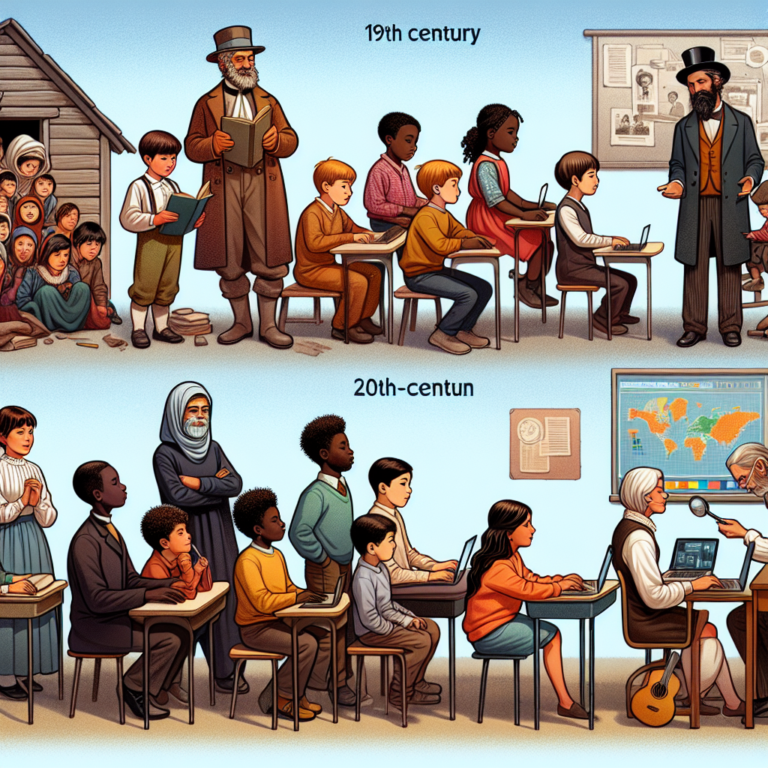The Quality of Education in Canada in 2024: A Comprehensive Overview
Canada is renowned for its high-quality education system, making it a preferred destination for students from around the globe. This comprehensive overview will delve into the various aspects that contribute to the quality of education in Canada, examining its strengths, the structure of its education system, and what sets it apart on the global stage.
The Structure of the Canadian Education System
The Canadian education system is divided into three main levels: primary, secondary, and post-secondary education. Each level plays a critical role in maintaining the high standards of education that Canada is known for.
- Primary Education: This level includes kindergarten through grade 8 and focuses on foundational skills in subjects such as mathematics, science, language arts, and social studies. The curriculum is designed to foster critical thinking, creativity, and problem-solving skills.
- Secondary Education: Grades 9 through 12 constitute secondary education, where students prepare for post-secondary education or enter the workforce. The curriculum becomes more specialized, with options for advanced placement and vocational training.
- Post-Secondary Education: Canada boasts a wide range of post-secondary institutions, including universities, colleges, and technical schools. These institutions offer a variety of programs, from undergraduate to doctoral degrees, and are known for their research opportunities and innovative teaching methods.
Strengths of Canadian Education
Several key factors contribute to the high quality of education in Canada:
- High Academic Standards: Canadian educational institutions adhere to rigorous academic standards, ensuring that students receive a comprehensive and challenging education. This commitment to excellence is reflected in Canada’s high global rankings in education.
- Qualified Educators: Teachers in Canada are highly qualified, often holding advanced degrees and undergoing continuous professional development. This ensures they are well-equipped to deliver effective and engaging instruction.
- Diverse and Inclusive Curriculum: The Canadian curriculum is diverse and inclusive, promoting multicultural understanding and respect. Students are exposed to a wide range of perspectives and are encouraged to think critically about global issues.
- Focus on Research and Innovation: Canadian universities are leaders in research and innovation, attracting students and faculty from around the world. This emphasis on research fosters a culture of inquiry and discovery, contributing to advancements in various fields.
- Supportive Learning Environment: Canadian schools and universities provide a supportive learning environment with access to modern facilities, resources, and support services. This includes libraries, laboratories, counseling services, and extracurricular activities that enhance the overall educational experience.
International Student Appeal
Canada’s education system is particularly appealing to international students, and for good reason:
- Quality and Reputation: Canadian degrees and diplomas are recognized globally for their quality and rigor. This reputation makes Canadian graduates highly sought after by employers worldwide.
- Welcoming Culture: Canada is known for its welcoming and inclusive culture. International students often find it easier to adapt to life in Canada due to the country’s multicultural society and friendly population.
- Post-Graduation Opportunities: Canada offers attractive post-graduation opportunities for international students, including work permits and pathways to permanent residency. This makes Canada an ideal destination for those looking to build a future in a new country.
- Affordable Education: Compared to other top education destinations, Canada offers high-quality education at a relatively affordable cost. This, combined with the availability of scholarships and financial aid, makes studying in Canada more accessible to students from various economic backgrounds.
Challenges and Areas for Improvement
While the quality of education in Canada is generally high, there are areas that require attention:
- Accessibility and Equity: Ensuring that all students, regardless of their socio-economic background, have access to quality education remains a challenge. Efforts are ongoing to address disparities and improve equity across the education system.
- Indigenous Education: Enhancing educational opportunities and outcomes for Indigenous students is a critical area for improvement. There is a need for culturally relevant curriculum and greater support for Indigenous communities.
- Technological Integration: While many Canadian schools are well-equipped with modern technology, there is a need for continuous investment in technological infrastructure and training to keep pace with rapid advancements.
- Mental Health Support: The increasing awareness of mental health issues among students calls for enhanced support services and programs to ensure their well-being and academic success.
Future Outlook
The future of education in Canada looks promising, with ongoing initiatives aimed at enhancing the quality and accessibility of education. Some key trends and developments include:
- Increased Focus on STEM: Emphasis on science, technology, engineering, and mathematics (STEM) education is expected to grow, preparing students for careers in high-demand fields.
- Expansion of Online and Hybrid Learning: The COVID-19 pandemic has accelerated the adoption of online and hybrid learning models. Canadian institutions are likely to continue expanding and refining these models to provide flexible learning options.
- Global Collaboration: Canadian educational institutions are increasingly engaging in global partnerships and collaborations, enhancing research opportunities and cultural exchange.
- Sustainable Education: There is a growing focus on sustainability and environmental education, preparing students to address global challenges related to climate change and sustainability.
Conclusion
The quality of education in Canada is among the best in the world, characterized by high academic standards, qualified educators, a diverse curriculum, and a supportive learning environment. While challenges remain, ongoing efforts to improve accessibility, equity, and technological integration are paving the way for a brighter future. For international students, Canada offers a welcoming and inclusive environment with excellent post-graduation opportunities, making it an ideal destination for quality education in 2024 and beyond.







